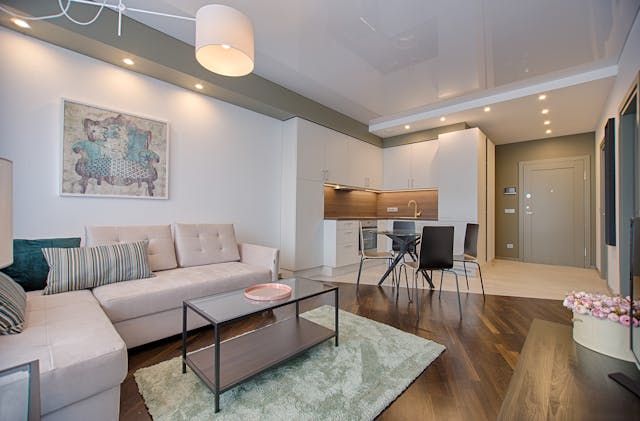
Have you ever found yourself wondering whether to furnish your rental or not? It’s a dilemma many landlords grapple with, and the decision can significantly impact your rental income and tenant experience. Renting a property furnished can attract a different pool of renters, potentially commanding higher rent and reducing vacancy periods.
Furnishing your property can come with challenges, from maintaining the furniture to managing wear and tear, but makes your property very attractive and can demand a higher rent. On the other hand, an unfurnished property can ask less rent, but they offer tenants the freedom to personalize their space while simplifying your responsibilities as a landlord.
In this article, we’ll explore the pros and cons of each option to help you make an informed choice that aligns with your investment strategy and enhances your rental property’s appeal.
Pros of Renting Furnished
Attracts Short-Term Renters
Renting a property furnished can significantly appeal to individuals needing temporary housing, such as corporate employees on short-term assignments, expatriates, or students. These renters often seek the convenience of a move-in-ready home, which eliminates the hassle of purchasing or transporting furniture. This demand can make your property more attractive and competitive, leading to a quicker lease agreement and potentially higher rental rates.
Potential for Higher Rent
Furnished properties typically command higher rental rates compared to their unfurnished counterparts. The convenience of having a ready-to-use living space is valuable to many renters, and they are often willing to pay a premium for it. This can translate into increased rental income and a potentially more lucrative investment.

Reduced Vacancy Periods
The immediate appeal of a furnished property can lead to faster occupancy. Since the property is ready for tenants to move in without additional setup, it can attract a larger pool of prospective renters looking for convenience. This can result in shorter vacancy periods, ensuring that your property remains occupied and generating rental income more consistently.
Cons of Renting Furnished
Maintenance and Upkeep
Furnished rentals come with the ongoing responsibility of maintaining and repairing the provided furniture and appliances. This can be time-consuming and costly, especially if tenants cause damage or if items wear out over time. Regular upkeep is required to ensure that the furnishings remain in good condition, and managing this aspect can add a layer of complexity to property management.
Wear and Tear
Furnished properties are prone to increased wear and tear due to tenant use. Furniture and appliances can suffer from daily use, leading to potential damage and the need for frequent repairs or replacements. This can be a significant drawback, as it may lead to additional costs and reduce the overall lifespan of the items provided.
Higher Initial Investment
Equipping a property with furniture and appliances requires a substantial upfront investment. This initial cost can be significant, depending on the quality and quantity of furnishings. Over time, the value of these items may depreciate, and you may not fully recoup the investment through higher rent alone. This financial outlay should be weighed against potential benefits to ensure it aligns with your investment strategy.

Pros of Renting Unfurnished
Lower Maintenance Costs
Without the need to provide and maintain furniture, landlords can reduce their responsibilities and costs associated with property upkeep. This means fewer repairs and less frequent replacements, simplifying property management and minimizing ongoing expenses. The absence of furnishings also eliminates the need to address tenant-related damage to furniture, further reducing maintenance efforts and costs.
Attracts Long-Term Tenants
Unfurnished properties often appeal to renters seeking a stable, long-term living situation. These tenants are typically looking for a place they can settle into and personalize with their own belongings, which can lead to longer lease agreements. This stability can reduce turnover rates and the associated costs of finding new tenants, providing a more predictable and steady rental income.
Lower Initial Costs
Renting an unfurnished property eliminates the need for a significant upfront investment in furniture and appliances. This can be particularly advantageous for landlords managing multiple properties or those operating within a tight budget.
Cons of Renting Unfurnished
Potentially Lower Rent
Unfurnished properties generally attract lower rental rates compared to furnished ones. The absence of provided furniture can make the property less appealing to certain renters, potentially resulting in lower rental income. This may affect the overall profitability of the rental, especially in markets where furnished rentals are in high demand.

Longer Vacancy Periods
Unfurnished properties might take more time to lease, particularly in areas where furnished rentals are highly sought after. The lack of immediate move-in convenience can deter some potential renters, leading to extended vacancy periods. This can result in lost rental income and ongoing costs related to maintaining the empty property.
Tenant Move-In Costs
Prospective tenants may face higher costs to furnish the property themselves, which could make your rental less attractive compared to furnished options. The added expense and effort of purchasing or moving furniture can be a deterrent for some renters.
Market Considerations
Local Rental Market Trends
- Demand Analysis: Assess the demand for furnished versus unfurnished rentals in your area. In urban centers or near educational institutions, furnished properties might be more sought after, while suburban areas may lean towards unfurnished rentals.
- Competitive Pricing: Review the rental rates of similar properties in your neighborhood to determine if furnishing your property could give you a competitive edge.
Target Demographics
- Tenant Preferences: Identify the types of renters most likely to be interested in your property. Short-term renters, professionals, or students might prefer furnished options, whereas families or long-term tenants might favor unfurnished properties.
- Market Needs: Align your decision with the needs of your target market. If there’s a higher demand for furnished rentals in your area, catering to this demand could attract more tenants and potentially secure higher rent.
Bottom Line
Ultimately, deciding whether to rent your property furnished or unfurnished hinges on your financial goals, property type, and market demand. For personalized advice and expert guidance tailored to your specific situation, reach out to Action Properties, Inc.
Their team can help you evaluate your options, understand market trends, and choose the best strategy to maximize your rental income and property appeal. Contact Action Properties, Inc. today to explore what’s right for you.